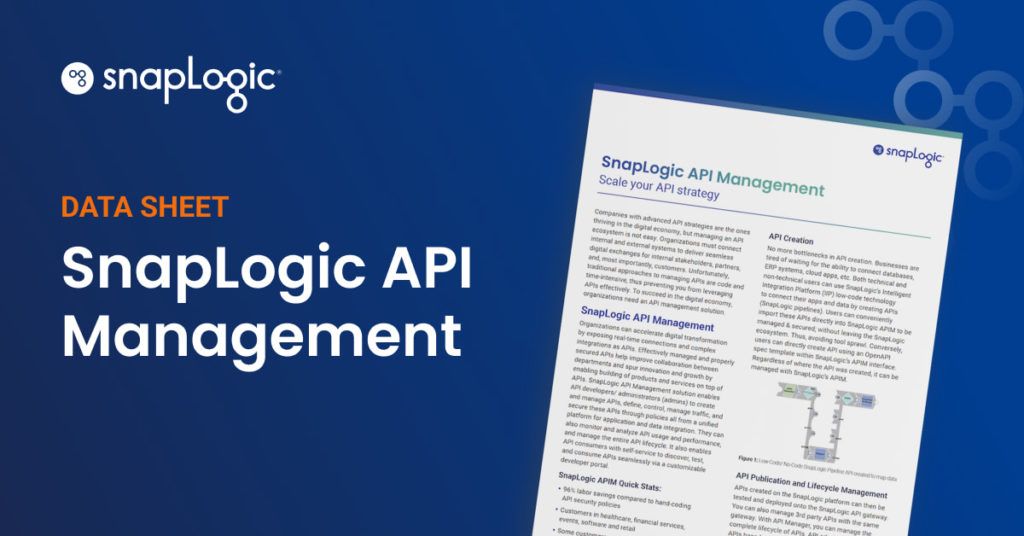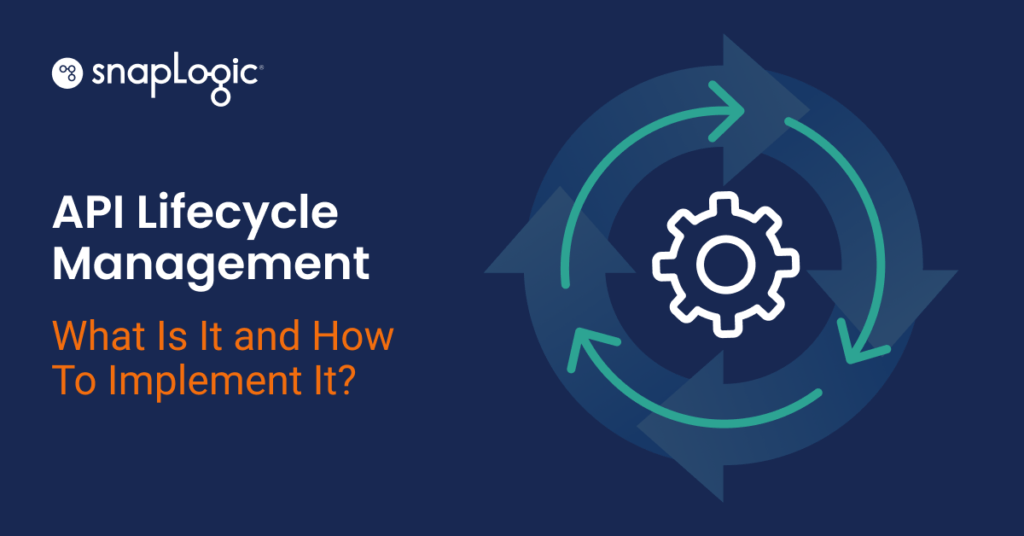In the rapidly evolving digital landscape, the strategic management of application programming interfaces (APIs) is a critical component of any organization’s digital transformation. This is where API governance plays a pivotal role.
API governance refers to the comprehensive set of practices and policies implemented to manage and utilize APIs effectively. It encompasses aspects like security, versioning, and monitoring, ensuring that APIs are secure, reliable, and align with business objectives. API governance is more than just technical oversight; it’s about ensuring that the API ecosystem within an organization operates efficiently and cohesively, supporting both current needs and future growth.
What we’ll be covering about API governance
This post aims to provide an in-depth understanding of API governance and its significance in today’s technology-driven business environments. We will explore the relationship between API governance, API security, and API management, highlighting how these aspects interconnect to create a robust and secure digital infrastructure.
We will also discuss the essential steps leaders should consider when formulating an effective API governance strategy, addressing common challenges and api governance best practices in the field. Furthermore, we will delve into how SnapLogic’s API Management platform can assist organizations in achieving their API governance objectives, offering a comprehensive solution for API lifecycle management, from design and development to security and analytics.
As we proceed, you’ll gain insights into creating a governance model that not only addresses current API challenges but also paves the way for future-proofing your API landscape, integrating seamlessly with your business strategy and digital initiatives.
What is API governance?
At its core, API governance is a framework for overseeing the entire lifecycle of an API. This framework encompasses the creation, deployment, management, and retirement of APIs. It establishes a set of rules and guidelines to ensure that APIs are developed in a way that is secure, consistent, and aligned with an organization’s broader business objectives. The essence of API governance lies in standardizing practices across all APIs to ensure they meet certain quality and security benchmarks.
What’s the goal of API governance in digital transformation?

In the context of digital transformation, the goal of API governance is to streamline and standardize the way APIs are used within an organization. This standardization is key to driving innovation, as it allows for more efficient integration of various digital services and applications. Effective API governance helps an organization harness the full potential of its API ecosystem, ensuring that these APIs act as reliable conduits for digital operations, facilitating seamless interactions between different systems, and enhancing the overall digital user experience.
How does API governance ensure high-quality and consistent APIs?
The implementation of API governance ensures that every API developed and used within the organization adheres to a high standard of quality and consistency. This is achieved through well-defined policies and standards for API design, versioning, and lifecycle management. By focusing on a consistent API strategy, organizations can ensure that their APIs are not only functionally robust but also secure and easy to use. API governance also involves regular audits and reviews, which help in maintaining the integrity and quality of the APIs over time, thereby enhancing the overall functionality and user experience of the digital services they support.
The triad of API success: governance, security, and management
In the realm of API development and maintenance, three critical components work in tandem to ensure the success and security of an organization’s API landscape: governance, security, and management. Understanding the interconnection between these components is key to a comprehensive API strategy.
What’s the difference between API governance, API security, and API management?
API governance, security, and management form a triad that is essential for the effective functioning of APIs within any digital ecosystem. API governance lays the foundation by establishing the policies and standards for API development and usage. This includes defining the API lifecycle, setting up design principles, and ensuring compliance with organizational goals. API security, on the other hand, focuses on protecting APIs from external threats and vulnerabilities, encompassing measures like authentication, encryption, and threat detection. Finally, API management operationalizes these governance and security strategies, handling the day-to-day tasks of API deployment, monitoring, and version control. Together, these elements ensure that APIs are not only functional and efficient but also secure and aligned with business objectives.
Laying the foundation: steps for effective API governance
The establishment of a sound API governance framework is a strategic process that involves several key steps. It’s about laying a solid foundation that can support both current and future API needs of an organization. Let’s explore these steps in detail.
Creating an API Governance Strategy
Developing an API governance strategy is the first step in ensuring the successful implementation and management of APIs. This strategy should align with the organization’s overall business goals and digital transformation initiatives. It involves defining clear governance policies that cover aspects such as API quality, security standards, and compliance requirements. An effective strategy also considers the various applications (apps) and services that will utilize these APIs, ensuring that they meet the desired functionality and performance standards.
Identifying Key Stakeholders and Their Roles
Effective governance requires the collaboration and commitment of various stakeholders. This includes API developers, IT administrators, security professionals, and business leaders. Identifying these key stakeholders and clearly defining their roles and responsibilities is essential. Each stakeholder brings a unique perspective and skill set, contributing to a comprehensive and holistic approach to API governance.
Incorporating API Design, Versioning, and Lifecycle Management
A critical component of API governance is the management of the API lifecycle, which encompasses stages from design and development to deployment and retirement. Emphasizing strong API design principles, including consistent versioning practices, is vital for maintaining the stability and usability of APIs. Additionally, lifecycle management practices ensure that APIs remain relevant and effective throughout their operational lifespan.
Navigating challenges in API governance
Implementing a robust API governance framework is not without its challenges. As organizations expand their digital footprint, they often encounter various hurdles that can complicate API governance.
Common Challenges and Vulnerabilities in API Governance
One of the primary challenges in API governance is addressing the range of vulnerabilities that can arise. These include security risks such as unauthorized access and data breaches, which can stem from insufficient authentication and access control measures. Additionally, the evolving nature of technology means that APIs can become outdated quickly, leading to compatibility and functionality issues. There’s also the challenge of ensuring consistent API quality and performance, which requires rigorous validation and testing procedures. Another critical concern is the governance of third-party APIs, where control over security and lifecycle management may be limited.
Managing a Growing Number of APIs and Their Dependencies
As organizations embrace digital transformation, the number of APIs within their systems tends to grow exponentially. Managing this increasing number of APIs, along with their complex dependencies, becomes a significant challenge. Each API might interact with multiple systems, making it difficult to track and manage these interactions effectively. Ensuring that all APIs are up-to-date and function cohesively within this intricate web of dependencies requires a well-thought-out governance strategy. This strategy must include efficient documentation, version control, and a comprehensive understanding of how each API contributes to the overall ecosystem.
Moreover, automating certain aspects of API governance can be an effective way to manage this complexity. Automation can streamline the deployment and monitoring processes, allowing for more efficient management of a large number of APIs. It also helps in maintaining a high standard of quality and consistency across all APIs, a crucial factor in the long-term success of an organization’s API program.
By acknowledging and addressing these challenges head-on, organizations can enhance their API governance efforts, ensuring that their APIs remain secure, efficient, and aligned with their broader business objectives.
Best practices for robust API governance
For a successful API governance strategy, certain best practices are indispensable. Implementing these can significantly enhance the functionality, security, and efficiency of APIs in an organization’s digital landscape.
- Establishing Clear Governance Rules and Policies: Develop comprehensive governance rules and policies that address every aspect of the API lifecycle, from development to retirement. These policies should include security protocols, data handling standards, and compliance requirements, ensuring that everyone involved understands their role and responsibilities.
- Embracing Automation and DevOps in the API Development Process: Incorporate automation tools and DevOps methodologies to streamline the API development process. Automation aids in consistent testing, deployment, and management of APIs, while DevOps fosters a collaborative environment between developers and operations teams, leading to more agile and efficient API development and maintenance.
- Implementing Reusable Functionality and Metadata Management: Design APIs with reusability in mind to facilitate the efficient creation of new APIs from existing components. Efficient metadata management ensures that API documentation is accurate and accessible, supporting consistent API usage and understanding across the organization.
- Real-Time Monitoring and Maintenance of API Health: Adopt real-time monitoring tools to keep a vigilant eye on API performance and health. Regular maintenance and updates are crucial for addressing security vulnerabilities, ensuring optimal performance, and aligning APIs with evolving business needs.
- Regularly Reviewing and Updating Governance Policies: Governance policies should be dynamic, evolving with changes in technology, business objectives, and industry regulations. Regular reviews and updates to these policies ensure that they remain relevant and effective.
- Fostering a Culture of Continuous Improvement: Encourage a culture that values feedback and continuous improvement in the API development process. This involves regular training sessions, workshops, and open forums for discussions on API best practices and innovations.
- Ensuring Stakeholder Involvement and Communication: Keep all stakeholders involved in the governance process informed and engaged. Effective communication and transparency in decision-making processes ensure that the governance strategy is uniformly understood and implemented.
By adhering to these best practices, organizations can build a strong foundation for API governance, leading to a more secure, efficient, and responsive API ecosystem.
Harnessing SnapLogic for API governance
SnapLogic provides a comprehensive and intuitive solution for API governance, offering a range of features and tools that streamline and enhance the governance process.
How SnapLogic Enhances API Governance
SnapLogic’s Enterprise API Management and Development Platform offers a unified platform that simplifies app integration, data integration, and API management. This platform enables the easy creation and secure management of APIs by linking a series of pre-built connectors, known as Snaps. With over 700 Snaps available, SnapLogic facilitates the creation of simple to complex workflows, catering to various API governance needs, from security to version control.
Features and Tools in SnapLogic for Effective Governance
- Security and Versioning: SnapLogic places a strong emphasis on key aspects of API governance such as security and versioning. This ensures that APIs not only meet business objectives but are also secure and reliable.
- Advanced API Management Features: The SnapLogic API platform continually enhances its platform with advanced features for improved governance and security. This includes the ability to test APIs directly within the platform, simplifying the API management process and ensuring that APIs function as intended before deployment.
- Access Control Policies: The platform offers a comprehensive list of access control policies, from open-access policies like the ‘Anonymous Authenticator’ to more stringent ones like ‘OAuth2’. This range allows organizations to tailor their API access control according to their specific security needs and governance policies.
SnapLogic in action for API Governance
SnapLogic’s platform has been instrumental in helping various organizations implement effective API governance. By utilizing SnapLogic’s features, businesses have been able to streamline their API development processes, enforce robust security measures, and ensure that their APIs adhere to the set governance standards. These real-world applications highlight SnapLogic’s capability to handle diverse API governance requirements, from managing API lifecycles to ensuring compliance with industry-specific regulations.
Discover how SnapLogic’s innovative platform can revolutionize your organization’s digital transformation journey. Explore our case study with Boston University on how they built a thriving API ecosystem, and learn how our solutions can accelerate your digital transformation initiatives. Uncover the success stories and be inspired to embark on your path to a more connected, efficient, and forward-thinking digital future.
Conclusion
As we conclude our exploration of API governance, it’s important to recap the key points and look ahead at the evolving role of API governance in business strategy.
API governance is more than a technical necessity; it’s a strategic imperative in the digital age. It encompasses creating comprehensive strategies, involving key stakeholders, and managing the intricate lifecycle of APIs. By establishing clear governance rules, embracing automation and DevOps, and focusing on reusable functionality, organizations can ensure that their APIs are not only efficient and secure but also aligned with their broader business goals.
Looking ahead, the future of API governance appears increasingly integral to the success of any digital business strategy. As APIs continue to proliferate and become more complex, the need for effective governance will only grow. The focus will likely shift towards more automated, agile, and user-centric governance models, facilitating rapid digital innovation while maintaining security and quality standards.
Organizations that understand and invest in robust API governance today are positioning themselves for success in an increasingly interconnected digital world. The journey towards effective API governance is ongoing, and with tools like SnapLogic, businesses are well-equipped to navigate this landscape confidently and efficiently.









